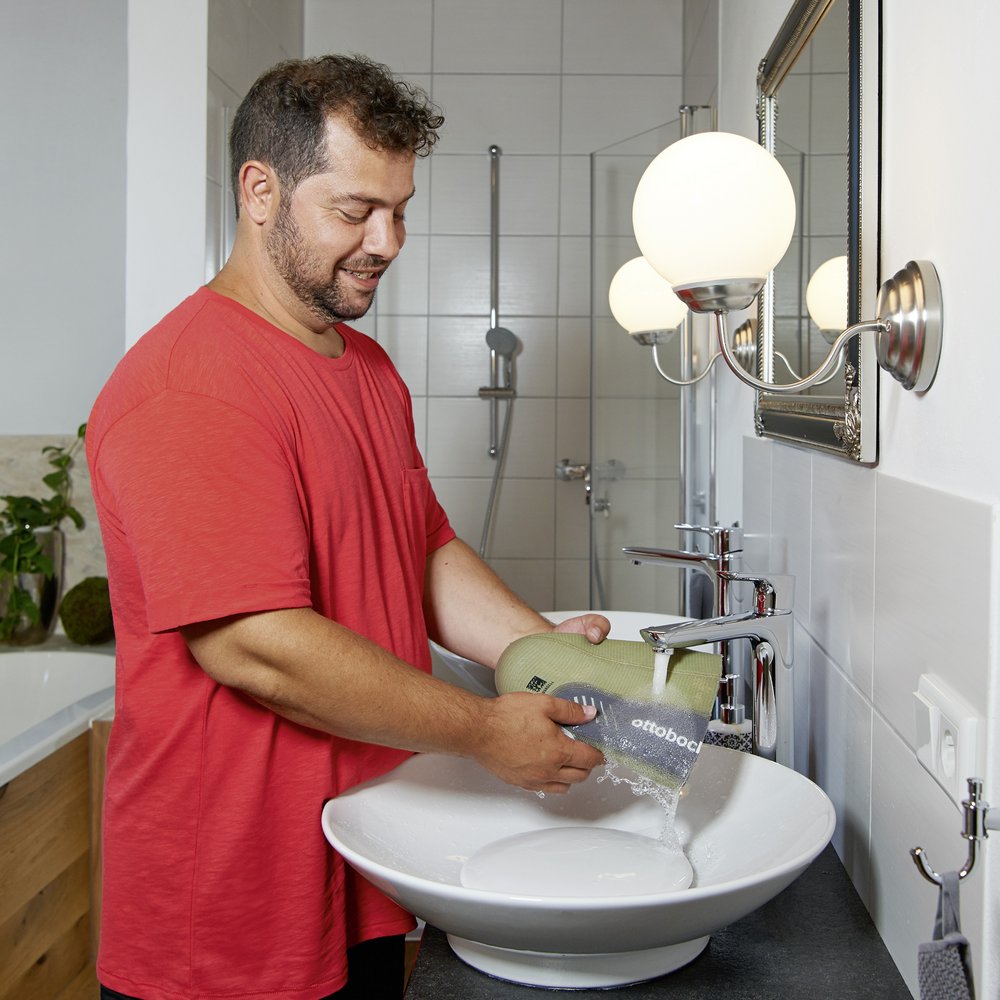Compression therapy with a silicone liner
After an amputation, the tissue of your residual limb will be swollen. If you plan to use a prosthesis in the future – such as for walking – it is important to reduce that swelling as quickly as possible. A silicone liner can help with this. A silicone liner is a cover that forms an intermediate layer between your skin and your prosthetic socket.
A silicone liner is excellent for compression therapy. It helps place pressure directly on your residual limb, so that it has the right shape for your future prosthetic. Additional advantage: your scar will be soft and smooth thanks to the skin-friendly material.
How do you use a silicone liner?
In the hospital, a doctor, nurse or physical therapist will help you put on the silicone liner. But you can also do this yourself. The best way to put on your liner is to turn it inside out, place it on the end of your residual limb and then roll it out over your residual limb. It is much easier to roll it on than to pull it on like a sock. Also make sure that there are no wrinkles in the liner and that no air is trapped between your skin and the liner.
Compression therapy with bandages or compression socks
Did you know that compression therapy is possible using other techniques? Apart from compression therapy with a silicone liner, you can also opt for compression therapy with bandages – where your residual limb is covered with pressure bandages – or compression therapy with compression socks . Not sure whether a silicone liner is right for you? Your doctor can recommend the best form of compression therapy for you.
